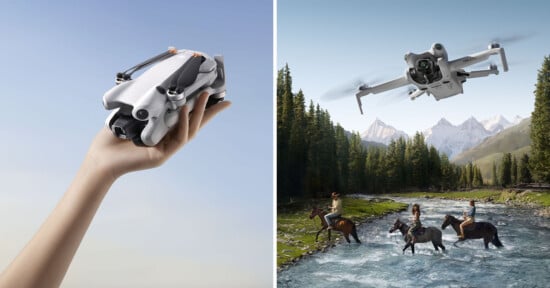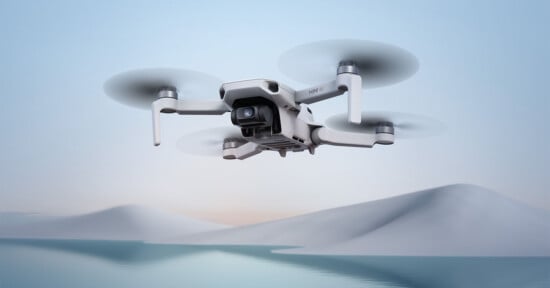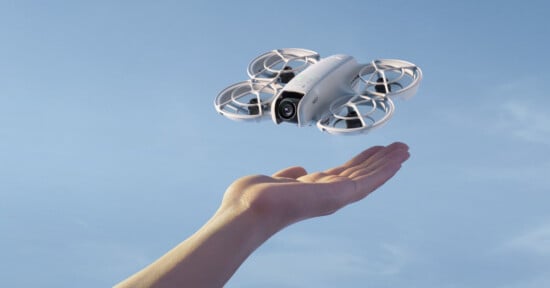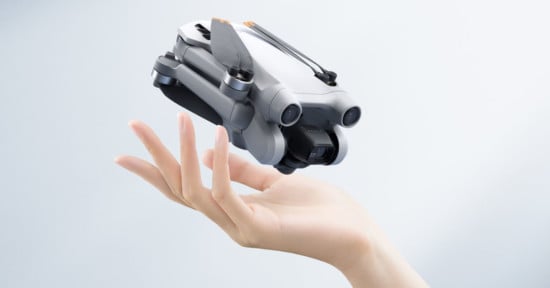DJI’s Flip Combines the Ease of the Neo With the Image Quality of the Mini
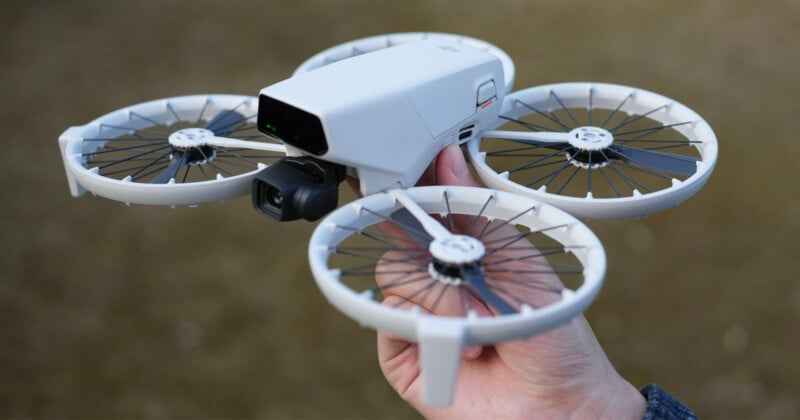
DJI announced the Flip, a consumer-focused drone that combines the ease of use that made the Neo so appealing with the image quality of the Mini 4K, creating a drone that is still under 250 grams but can capture 4K videos and up to 48-megapixel photos.
DJI’s drone offerings can sometimes feel as though they overlap and that could be seen as the case with the new Flip. DJI doesn’t say where the Flip lives in its expansive line of drones, but it does manage to take elements of both the Neo and the Mini and even elevates the image quality above what the latter $299 drone brought last year.
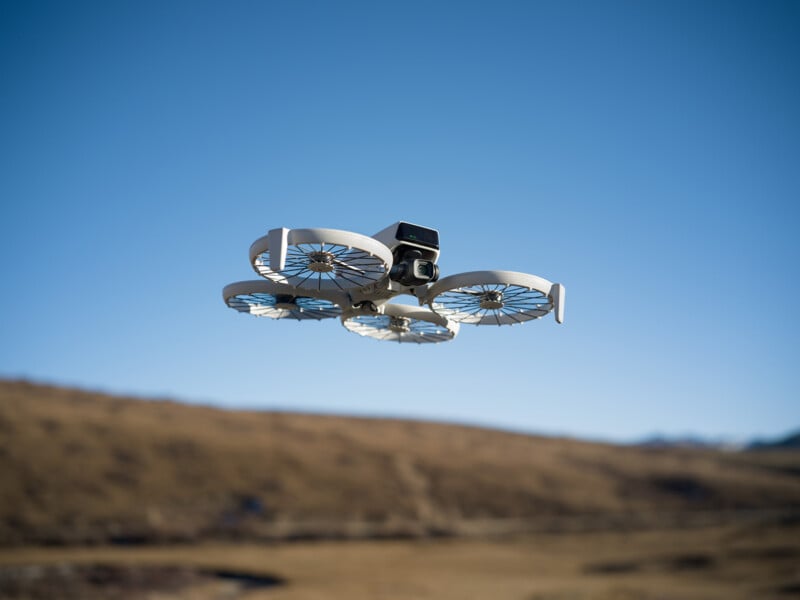
DJI says that the Flip is designed to build on the success the company found in its consumer camera drones and brings the AI tracking and intelligent shooting modes that have been a mainstay in its drones for a while now and combines them with foldable propeller guards and automatic braking (thanks to a 3D infrared sensing system), simplifying the process of capturing aerial footage as much as possible. That was the design goal of the $199 Neo DJI launched in September and while the Flip is much larger — it weighs “less than 249 grams” compared to the Neo’s scant 135 grams.
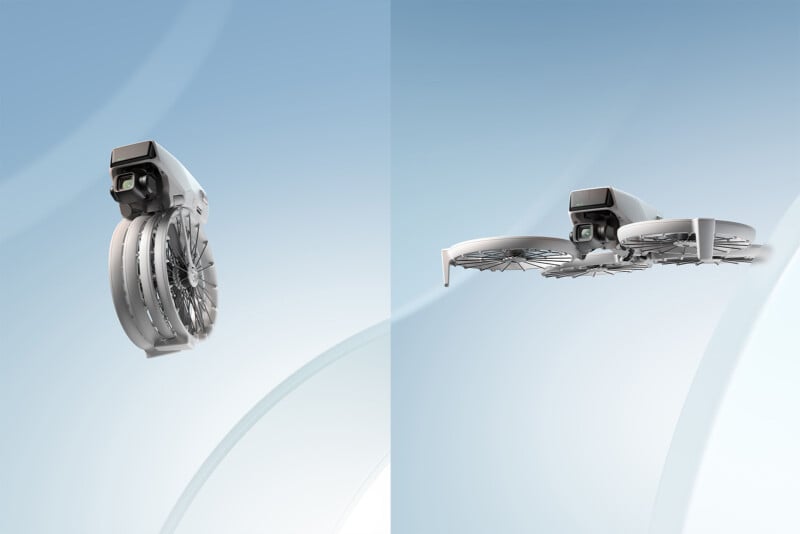
While the Neo was arguably pocketable, the Flip is significantly larger. That said, it is still designed to be easily portable and the folding propeller guards mean it won’t snag as easily on bags or clothes as the Mini might. When compacted, it looks very different than DJI drones of the past, becoming taller in exchange for compacting the width. DJI did not provide exact dimensions prior to announcement, but because of those built-in guards, the Flip does appear to take up more space when compacted than the Mini 4K does.
The best size example is the photo below, which shows the Flip next to DJI’s RC 2 controller:
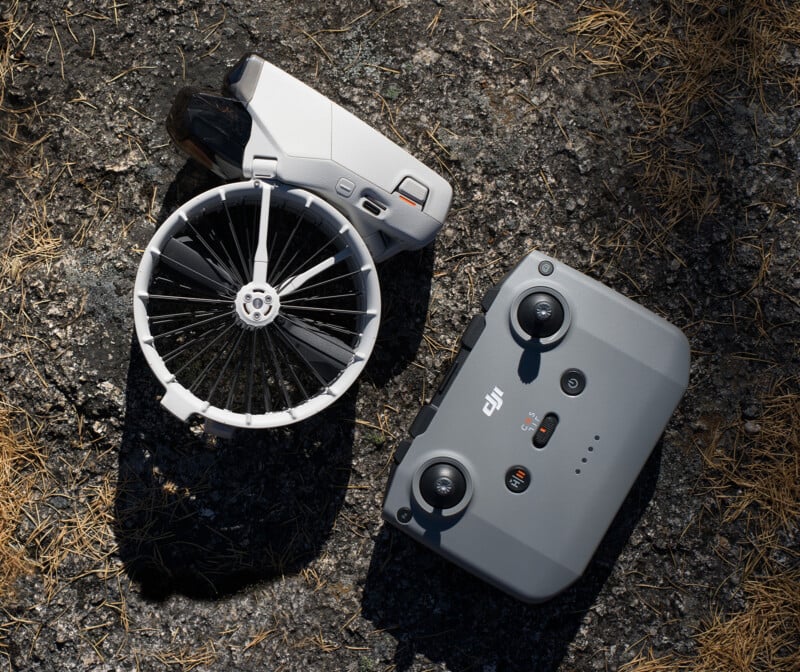
While the Flip would at first seem like it would sit between the Neo and the Mini 4K, it’s actually more performant than both and is closer to a reimagined, updated Mini 4 Pro. The Neo’s Type 1/2 image sensor is capable of capturing 12-megapixel photos and up to 4K video at 30p and the Mini 4K’s Type 1/2.3 sensor is capable of capturing the same quality. Neither can shoot 4K HDR.
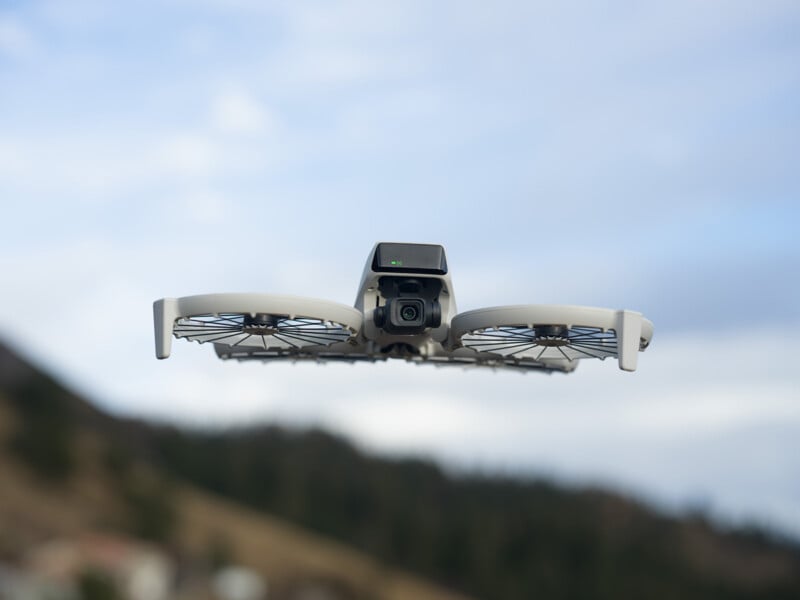
The Flip brings a major upgrade on that front. Its Type 1/1.3 is larger than the one found on both those other tiny drones, is equipped with DJI’s Dual Native ISO Fusion technology and features 2.4μm 4-in-1 pixel binning to improve performance in low-light at the cost of megapixel count (read: pixel binning). It appears to be the same sensor — or at least an updated version — as the one found in the aforementioned Mini 4 Pro. As a result, it can capture large 48-megapixel still photos and can shoot 4K at 60p in HDR as well as up to 100p in 4K in 10-bit D-Log.
The drone features a 24mm (35mm equivalent) lens with an f/1.7 aperture and, thanks to that aforementioned resolution, offers photographers up to 4x zoom (digital). DJI adds that the 4:3-aspect-ratio sensor provides enough space for vertical crops while maintaining a 2.7K resolution, allowing it to capture content for smartphone viewing and social media without any cropping — a digital workaround since the Flip doesn’t feature a rotating camera like some of DJI’s other drones.
Below are a few sample photos captured on the DJI Flip, courtesy of DJI:


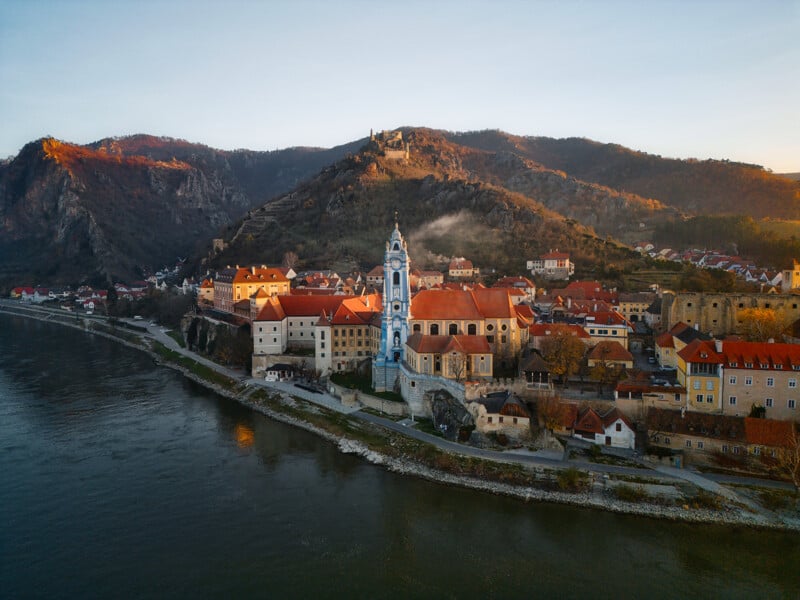
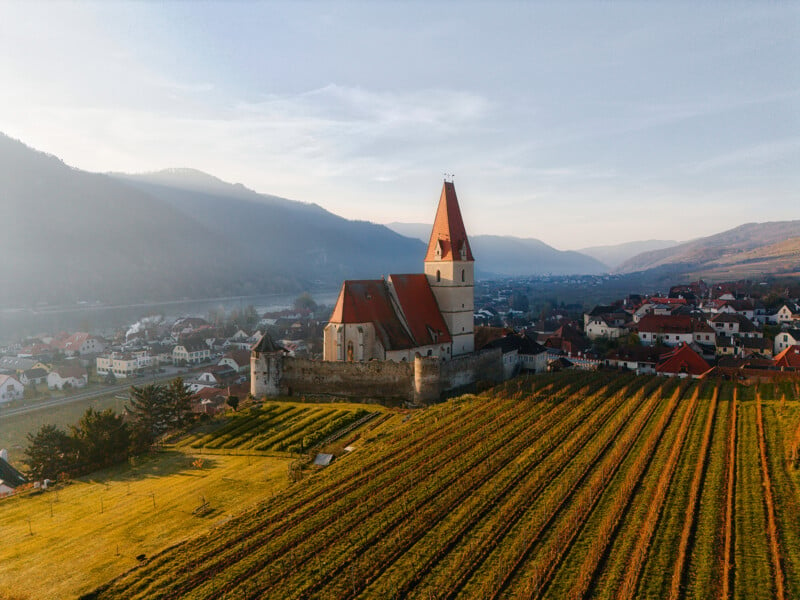
“DJI Flip makes flying simple, requiring no special training in most countries and regions. This palm-sized drone is lightweight and compact, making it an ideal travel companion for capturing any adventure,” DJI says.
“Whether hiking through forests or climbing steep peaks, DJI Flip makes flying simple. With one tap of the mode button, photographers can select from six intelligent shooting modes to capture impressive footage. AI Subject Tracking can also be enabled to keep a subject in the frame. Six intelligent shooting modes include Dronie, Circle, Rocket, Spotlight, Helix, and Boomerang.”
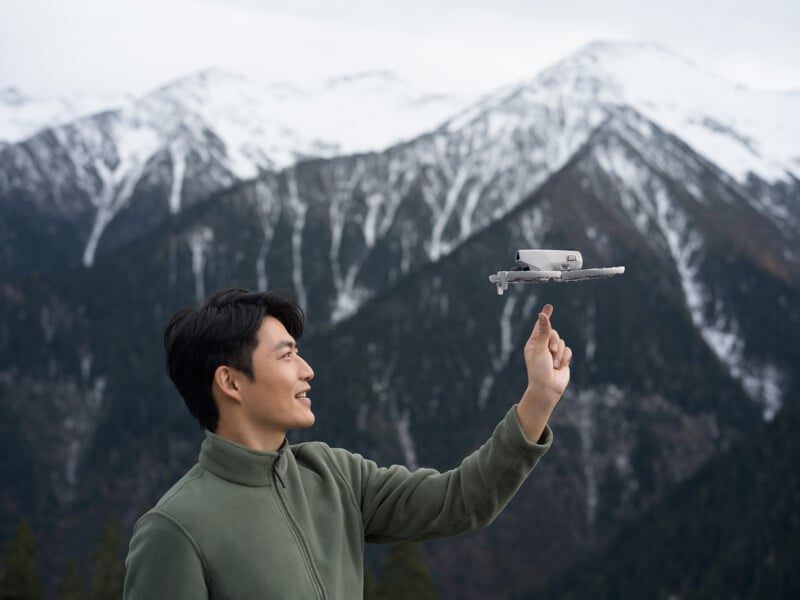
The DJI Flip’s Intelligent Flight Battery promises up to 31 minutes of flight time. It uses a different version of the flight battery than both the Neo and the Mini 4K. DJI also offers a set of ND filters that attach to the front of the lens.
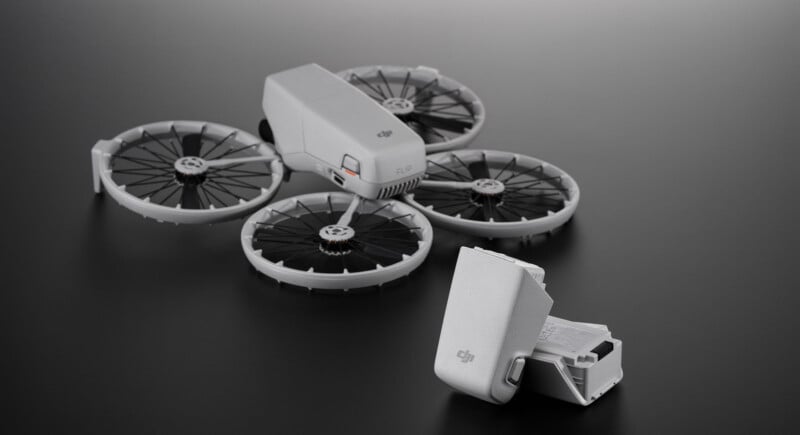
The Flip can be flown with or without a dedicated remote. It works with the company’s RC-N3 or RC 2 controllers but can also be used with the DJI Fly app or Voice Control. DJI adds that when it is connected to a phone, the drone’s captured audio goes through an algorithm that reduces noise and filters out the sound of the propellers. It also features a “Local Data Mode” which disconnects the Flip from the internet and ensures all data it captures stays only in the drone.
DJI says that when it is paired with the DJI RC-N3 or RC 2 remote controller, DJI O4 video transmission supports up to 13 km of 1080p/60fps video transmission.
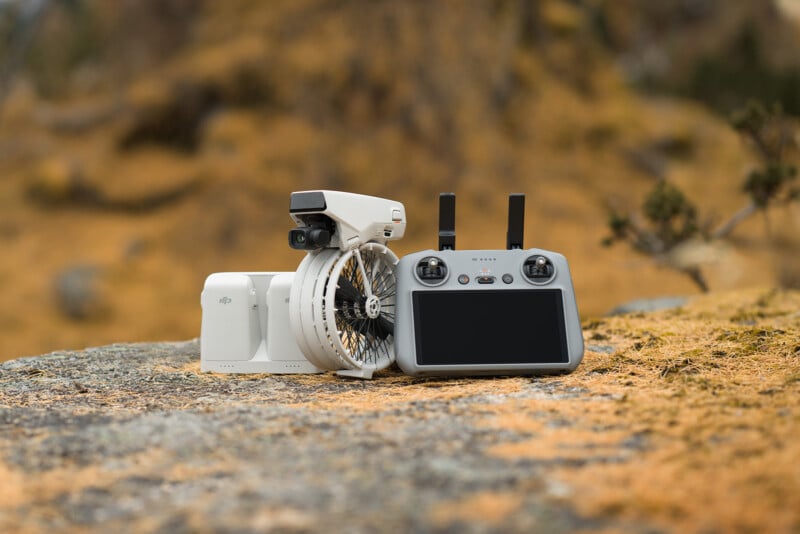
Since it’s technically an upgrade over both the Neo and the Mini 4K from last year, the DJI Flip is more expensive than both. The drone retails starting today for $439, $639 with an RC2 controller, and a “fly more” combo with additional batteries and accessories for $779. Prospectively, though, the Flip takes almost everything that made the Mini 4 Pro attractive and compresses it into a simpler package (although not smaller from a weight perspective) at a significant discount: the Mini 4 Pro debuted at $959 in 2023.
Image credits: DJI
